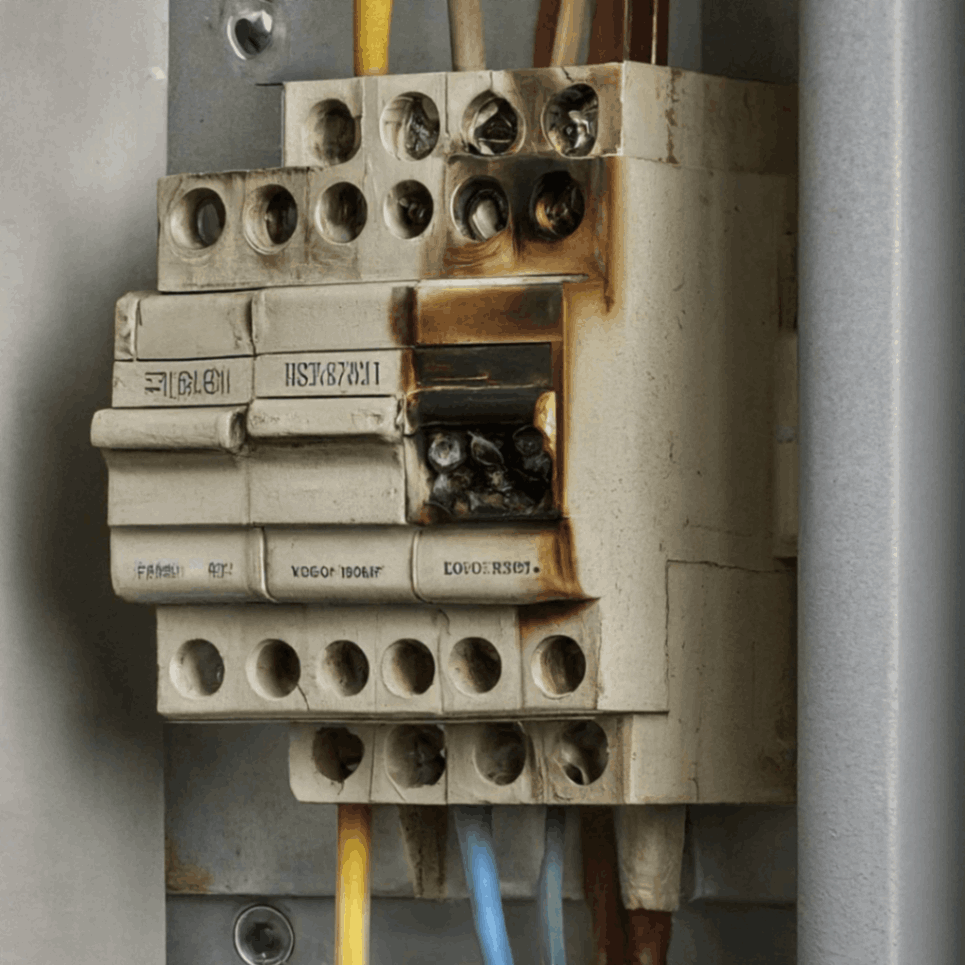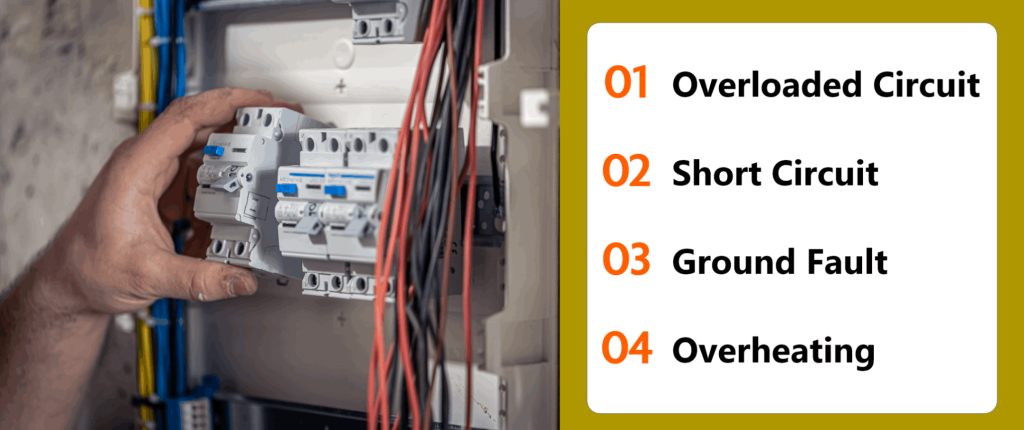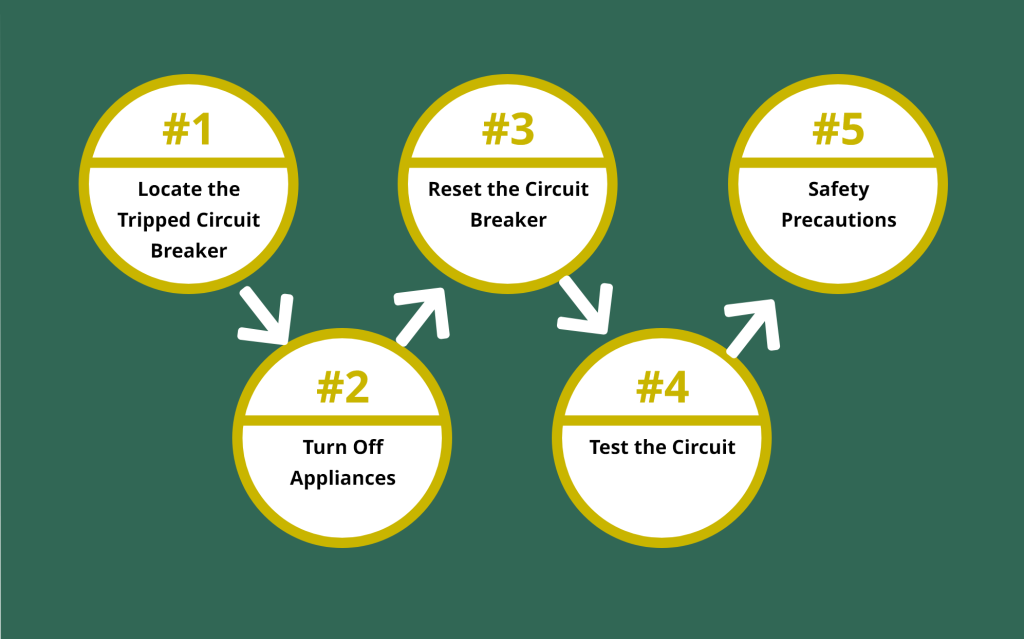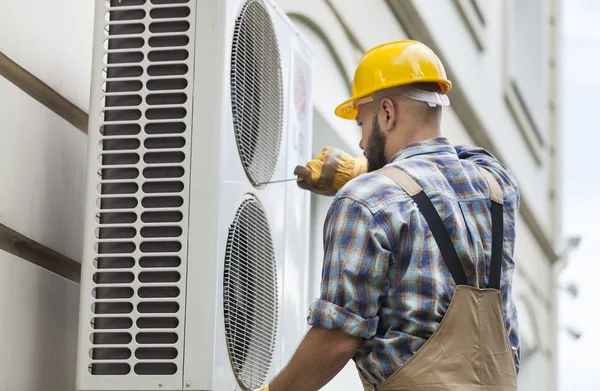 Last updated: August 19th, 2024
Last updated: August 19th, 2024
Why Do Circuit Breakers Keep Tripping? Fixing 101

Are you tired of constantly dealing with tripped circuit breakers in your home? Understanding why circuit breakers trip can help you prevent future disruptions and keep your electrical system running smoothly. This article will explore why circuit breakers trip, ways to fix the problem, preventative maintenance tips, and more.
Understand The Circuit Breakers
Circuit breakers are an essential safety feature in every home’s electrical system. They are designed to protect your home from electrical fires and other hazards by automatically shutting off power to a circuit when it detects a fault.
Different Types of Circuit Breakers & How They Trip
Let’s explore the various types of circuit breakers and the common reasons why they trip:
- Standard Circuit Breakers:
- Designed to protect individual circuits in your home.
- Available in different amperages to match the electrical load of each circuit.
- Trip when the electrical load exceeds the breaker’s amperage rating for an extended period.
- Ground Fault Circuit Interrupters (GFCIs):
- Designed to protect against electrical shock in damp locations.
- Trip when they detect a difference in the amount of current flowing into and out of the circuit.
- Arc Fault Circuit Interrupters (AFCIs):
- Designed to protect against electrical fires caused by arcing faults.
- Trip when they detect unusual arcing in the circuit, which can indicate damaged or deteriorating wiring.
- Combination Arc Fault Circuit Interrupters (CAFCIs):
-
- Combine the features of GFCIs and AFCIs to provide comprehensive protection against electrical shock and fire hazards.
- Trip when they detect series arc faults, parallel arc faults, overheating, and, if equipped, ground faults.
Identify The Culprit Behind The Tripped Circuit

1. Overloaded Circuit
One of the most common reasons a circuit breaker trips is an overloaded circuit. When too many devices are plugged into a single circuit and draw more current than the circuit can handle, the circuit breaker will trip to prevent overheating and potential electrical fires.
Solution
To fix this issue, unplug some devices from the overloaded circuit and redistribute them to other circuits in your home.
2. Short Circuit
A short circuit occurs when a hot wire comes into contact with a neutral or ground wire. This creates a low-resistance path, causing a surge of electrical current. As a safety measure, the circuit breaker trips to prevent damage to the electrical system.
Solution
To fix a short circuit, you must identify and repair the faulty wiring or electrical device causing the problem.
3. Ground Fault
A ground fault occurs when a hot wire comes into contact with a ground wire or a grounded metal component of an electrical device. Like a short circuit, a ground fault creates a sudden surge of electrical current, causing the circuit breaker to trip.
Solution
To fix a ground fault, you must identify and repair the faulty wiring or electrical device causing the problem.
4. Overheating
Overheating within the electrical system can also cause circuit breakers to trip. This can be due to loose connections, corroded wires, or damaged electrical components, increasing resistance and generating excess heat.
Solution
Inspect your electrical system for any signs of overheating, such as discolored outlets or a burning smell, and have any issues repaired by a qualified electrician.
Reset the Circuit Breaker

1. Locate the Tripped Circuit Breaker
- Open your electrical panel door. This panel is usually in your basement, garage, or utility room.
- Inside the panel, look for the breaker in the “off” position. Depending on the type of breaker, it will be between the “on” and “off” position or completely switched to the “off” position.
2. Turn Off Appliances
- Unplugging all devices from the affected circuit is essential to prevent overloading the circuit when you reset the breaker.
- Go through your home and unplug any devices connected to the circuit controlled by the tripped breaker. This includes appliances, electronics, lamps, and anything else plugged into outlets on that circuit.
3. Reset the Circuit Breaker
- Once all devices are unplugged, locate the tripped breaker.
- Push the tripped breaker firmly to the “off” position. You should feel some resistance as you push it.
- After ensuring the breaker is in the “off” position, firmly push it back to the “on” position. You should hear or feel a click as it snaps into place.
4. Test the Circuit
- With the breaker reset, it’s time to test the circuit to see if the problem has been resolved.
- Start by plugging in one device at a time to outlets on the previously tripped circuit.
- Turn on each device and monitor the circuit to see if the breaker trips again.
- If the breaker trips again immediately after resetting it, a more serious issue with the circuit may require professional attention.
5. Safety Precautions
- Always wear rubber-soled shoes and dry gloves when working with electrical components.
- Never attempt to reset a circuit breaker if you’re unsure or uncomfortable. It’s always best to contact a qualified electrician for assistance.
- If the circuit breaker continues to trip after resetting it, there may be an underlying circuit issue requiring professional attention. Contact a qualified electrician to inspect and repair the circuit.
Call a Professional
If you need help determining how to proceed or if the problem persists, contact a professional electrician. With the right expertise and assistance, you can resolve electrical issues quickly and safely, ensuring the safety and functionality of your home. One such professional service you can opt for is a home warranty.
- If you have a home warranty, check to see if the electrical system is covered under your policy. Most home warranties include coverage for electrical systems, which can help offset the cost of repairs.
- Contact your home warranty provider and file a claim for the electrical issue. Once your claim is approved, your home warranty provider will schedule a call with a qualified electrician.
- The electrician will diagnose the problem, make necessary repairs, and ensure your electrical system functions properly.
Having a home warranty provides peace of mind, knowing that unexpected electrical issues are covered. You can rest assured that any necessary repairs will be handled promptly and professionally without breaking the bank.
If you don’t already have a home warranty, head to the next section to learn about the top 5 home warranty companies that offer electrical coverage and other benefits to homeowners like you.
Top 5 Home Warranty Companies For Electrical Coverage
Here is the list of the top-rated home warranty companies that offer electrical coverage, reliable customer service, and more.
|
Company |
Premiums |
Deductibles |
Offers |
|
|
$45 – $60 |
$70 |
$150 Off + 2 Months Free |
||
|
$50 – $60 |
$90 |
$200 Off + 2 Months Free + Free Roof Leak Protection |
||
|
$29 – $89 |
$100 & $125 |
$50 Off On Multiple Properties |
||
|
$46 – $55 |
$75 – $125 |
1st Month Free + Free Roof Coverage |
||
|
$44 – $47 |
$60 – $75 |
$150 Off + Free Roof Coverage + 2 Months Free |
Get a free quote today to learn the exact pricing details for your location!
Conclusion
Understanding why circuit breakers trip is essential for maintaining a safe and reliable electrical system in your home. By addressing the underlying causes of tripped circuit breakers, you can prevent future disruptions and ensure the safety of your household.
If you're unsure how to fix a tripped circuit breaker or suspect a more serious electrical problem, always consult a qualified electrician for assistance.
related articles
 Discover First American Home Warranty Locations and What You Need to Know About Their Cover.
Discover First American Home Warranty Locations and What You Need to Know About Their Cover.
 Reviews of Home Warranty Companies Show You How to Determine If Your Home Is Covered
Reviews of Home Warranty Companies Show You How to Determine If Your Home Is Covered












